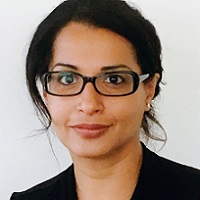 By Aparna Bala, Clinical Transformation Consultant, AirStrip
By Aparna Bala, Clinical Transformation Consultant, AirStrip
Twitter: @AirStripmHealth
Most physicians have long enjoyed the benefits of Bring Your Own Device (BYOD) policies. As health systems focused on ensuring doctors had access to state-of-the-art health IT to monitor their patients when they couldn’t be at the bedside, the quality of tools and pace of adoption for nursing solutions did not keep up. In some situations, nurses received bulky phones that could only be used within the walls of the hospital, while physicians needed to download specific apps on their own devices to receive calls from the nurses’ devices. Technical difficulties were frequent. In other situations, health systems tried rolling out solutions to nurses that had been used successfully by physicians. Unfortunately, those solutions were not always conducive to nurses’ workflow.
Technology should help level the playing field. The selection of technology which promotes effective collaboration across the entire care team – whether it be devices or just the software and mobile apps – is critical to ensuring that everyone understands what information is available and how to read, share and act on it. By deploying the same health IT tools across the board, hospitals and health systems can further bridge this gap between doctors and nurses, facilitating better collaboration and fostering a more trustworthy and encouraging environment. Additionally, by rolling out deployments to all care team members at the same time and providing joint trainings on how to best use these tools, care teams will be more unified in their approach to care delivery.
Building a Culture of Collaboration Around the Patient
While the technology itself plays a key role in improving collaboration, the culture and mindset of the health system is critical as well. As the party responsible for fostering the culture, hospital leadership should strive to instill a collaborative mindset by advising and ensuring inclusivity, in addition to implementing state-of-the-art health IT tools. Nurses’ participation in patient rounds are now recognized as a key component of care team integration, which requires a united front throughout the patient journey. Integrating the examination process gives nurses and physicians the opportunity to discuss the patient treatment plan at the point of care, which not only allows them to understand each other’s working style and point of view, but also provides care teams with a more complete picture of the patient condition. This can lead to improved treatment and outcomes.
As hospital leadership continues to encourage collaboration, this will lay the foundation for more constructive clinical feedback at the end of the patient care process during mortality and morbidity (M&M) meetings. M&M reviews allow nurses and physicians to discuss their performance as a team, and with the added visual component, they are also able to understand exactly where gaps in the chain exist and how those gaps can be closed. Rather than placing blame, care teams help each other by finding a way to strengthen the process and collaborating to eliminate the root cause of the gaps.
In addition to making sure both nurses and physicians are involved in settings like the exam room and M&M meetings, they should also be well represented in meetings and conversations discussing technology implementations. Since there is no one-size-fits-all health IT solution, hospital decision makers need to receive input from both groups and consider each hospital’s individual culture and unique needs in order to purchase the most effective IT solutions.
Ultimately, a positive patient outcome is the priority. The right tools will help establish a more positive, high-collaboration environment and enable more constructive discussions to improve patient care. With a more collaborative culture and the right health IT tools, patients will experience improved outcomes through increased safety, comfort and trust.
This article was originally published on Mobile Health Matters and is republished here with permission.
